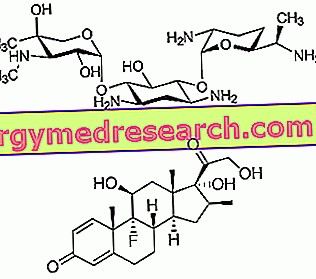Related articles: Multiple myeloma
Definition
Multiple myeloma is a tumor that affects the plasma cells, making them able to proliferate uncontrollably and accumulate in the bone marrow.
Plasma cells are the result of the maturation of B lymphocytes and their role normally consists in producing and releasing antibodies in response to infections. The neoplastic plasma cell is able, in most cases, to produce high quantities of a particular type of antibody: monoclonal immunoglobulins (paraprotein or M-protein).
The causes of multiple myeloma are still unknown, although the intervention of familial genetic and chromosomal factors and repeated antigenic stimulation has been suggested. Furthermore, the incidence of the disease is increased among those exposed to ionizing radiation or to certain chemical substances (petroleum derivatives and other hydrocarbons, solvents, pesticides, asbestos, etc.). Multiple myeloma occurs mainly in old age (over 50 years).
Most common symptoms and signs *
- Anemia
- Anorexia
- Anuria
- Asthenia
- Cachexia
- Calcinosis
- Kidney stones
- cruralgia
- Dyspnoea
- Bone pain
- Bruising
- Hepatomegaly
- Bone fractures
- hypercalcemia
- Leukopenia
- Swollen lymph nodes
- Backache
- Nausea
- Osteopenia
- Pancytopenia
- Paraplegia
- thrombocytopenia
- Polyuria
- Proteinuria
- Leg itch
- Itching in the hands
- Foam in urine
- Intense thirst
- Nephrotic syndrome
- splenomegaly
- Confusional state
- Constipation
- Uremia
- Pleural effusion
Further indications
Signs and symptoms can vary greatly from person to person. At the onset, myeloma may not cause any disturbance. On the other hand, as the disease progresses, symptoms related to plasma cell infiltration in various organs and to excessive production of monoclonal immunoglobulins are likely to occur.
The most frequent manifestations of multiple myeloma include bone pain, kidney failure, hypercalcaemia, anemia and recurrent infections. Expanding malignant plasma cells lead to the development of diffuse osteoporosis or delimited osteolytic lesions, generally at the level of the back, hip and skull. Myeloma cells, in fact, produce a substance that stimulates the activity of osteoclasts, responsible for the destruction of bone tissue. This predisposes to pathological fractures, even after minor traumas. Increased bone resorption can also lead to hypercalcaemia, with symptoms such as polyuria and polydipsia, and can cause nephrocalcinosis, thus contributing to renal failure.
Furthermore, following the suppression of erythropoiesis by tumor cells, anemia develops (with symptoms such as tiredness, weakness and difficulty breathing), coagulation disorders (bleeding problems, thrombocytopenia, hyperviscosity syndrome, etc.) and weakening of the defenses immune. Systemic effects of abnormal plasma cell growth also include neurological symptoms (peripheral neuropathies, weakness, mental confusion, spinal cord compression, carpal tunnel syndrome, etc.) and, less frequently, lymphadenopathy and hepatosplenomegaly.
The diagnosis of multiple myeloma requires the performance of complete blood chemistry, bone marrow biopsy, serum and urine protein electrophoresis and radiological investigations. Multiple myeloma is demonstrated by the presence of monoclonal immunoglobulins in the blood and / or urine, osteolytic lesions, light chain proteinuria or excess plasma cells in the bone marrow.
Multiple myeloma therapy is focused on reducing the clonal population and managing complications. The treatment therefore includes a combination therapy between conventional chemotherapy, immunomodulating drugs (thalidomide or lenalidomide), corticosteroids (prednisone or dexamethasone), bortezomib (proteasome inhibitor, a multi-protein complex present in all cells) and melphalan (alkylating agent) . The most commonly used regimens include the administration of thalidomide (+ dexamethasone), bortezomib and lenalidomide (+ dexamethasone). It is also possible to transplant autologous stem cells from peripheral blood and radiotherapy.



